|
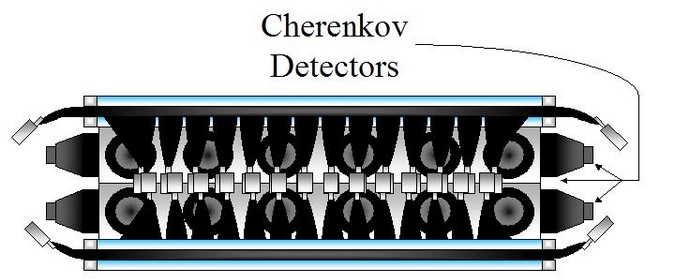
|
|
The Cherenkov detectors in TIGER are
responsible for determining the kinetic energy that of a particle
entering the detector. These detectors use an effect known as the
Cherenkov effect that was put to use in High-Energy Astrophysics within
the last 40 years. The principle of this effect is analogous to
an airplane surpassing the sound barrier in air. When light
travels through a given medium, its slows down by a factor equal to the
index of refraction of the medium. For example, when light passes
through water, which has an index of refraction, n = 1.33, it moves
with only about 75% (1/1.33) as fast as it does in a vacuum, where the
n = 1.0. So, if a (relativistic) particle moving faster than 75%
the speed of light enters water, it will interact with the water
molecules in its path and cause them to emit Cherenkov radiation.
In most cases, this light is in the blue or ultraviolet range of the
spectrum. Since this effect is quite dependent on the charge of
the incoming particle, two different nuclei entering TIGER with the
same energy will emit different amounts of light into the Cherenkov
boxes. |
|
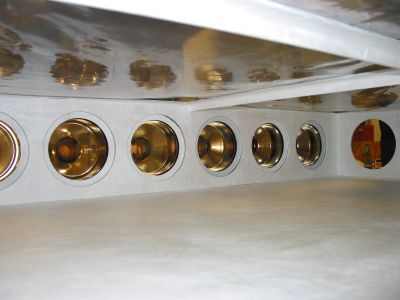 |
|
In the TIGER instrument, there are two
Cherenkov detectors. C1 is made with acrylic (n = 1.5) and C0 is
equipped with aerogel (n = 1.04), which incidentally holds the record
for the least dense solid substance on earth. In C0, the aerogel
is located at the top of the light box (labeled "Cherenkov Radiator" in
the figure below). In C1, the acrylic plate is located on
the bottom of the box. As a particle enters the light box, it
precipitates the emission of Cherenkov radiation, which is detected by
the 5-inch photomultiplier tubes (PMTs) located along the circumference
of the ~1 m2 light box. Lower-energy particles are
better readout by the acrylic radiator whereas the aerogel radiator
requires much more relativistic (higher energy) particles to emit
Cherenkov radiation. |
|
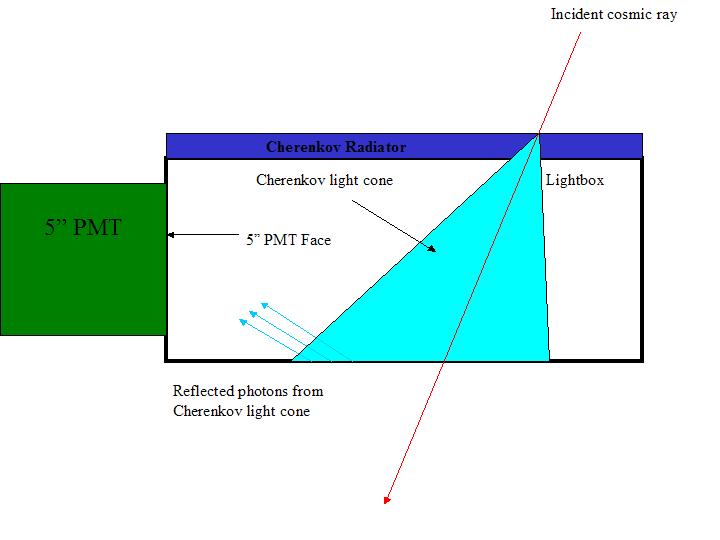 |
|
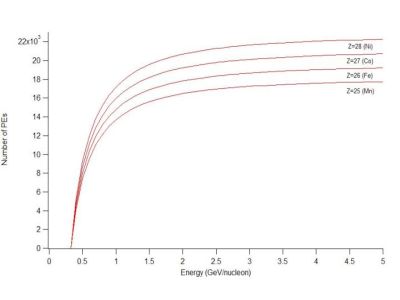 |
The plot to the top left shows what the
acrylic
Cherenkov signal (number of photoelectrons) would look like when
plotted against the energy of the incoming particle. As the
energy increases, the light output increases dramatically at
first. However, as the energy of the incoming nucleus becomes
relativistic (highly energetic), the signal in the Cherenkov box begins
to flatten out. The signal that a certain nucleus creates in the
Cherenkov box is highly sensitive to its charge, as was discussed
before. In the case of Cherenkov radiation, the signal is mostly
proportional to Z2. Looking again at the plot to the
top left, as more particles trigger the detectors, charge bands will
begin
to form in the data. Here we see where the contours of Mn, Fe, Co
and Ni would lie with respect to one another. In the case of the
aerogel radiator (plot to the bottom left), the signal rises a little
more slowly with energy and only begins to flatten out at extremely
high energies (incidentally where the number of particles is so small
that a detector like TIGER is too small to see a reasonable
amount). In the end, the two Cherenkov boxes serve to extend the
energy range at which TIGER is sensitive. |
|
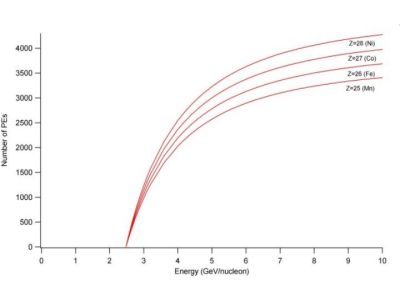 |
|
|
|
The skeleton of the two TIGER Cherenkov boxes, painted white
and
awaiting their PMTs.
The acrylic radiator can be seen in the bottom of the box
|
|
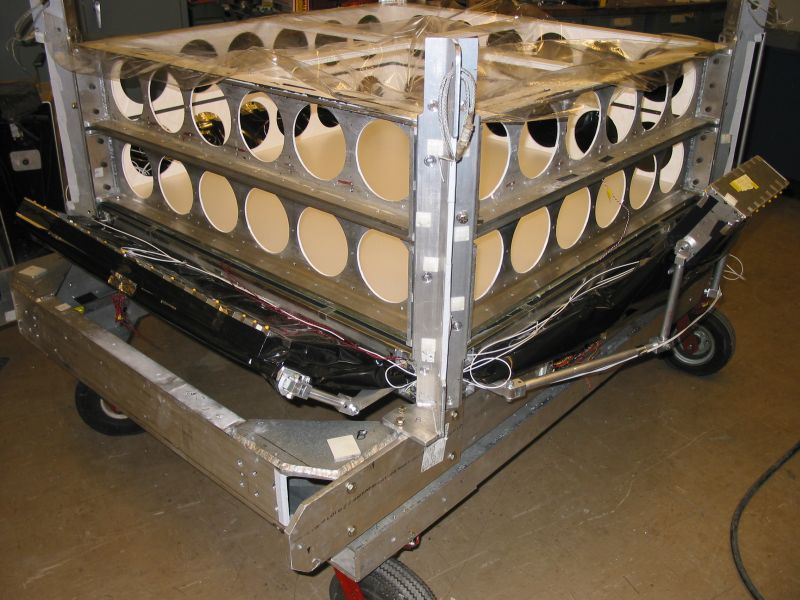 |





